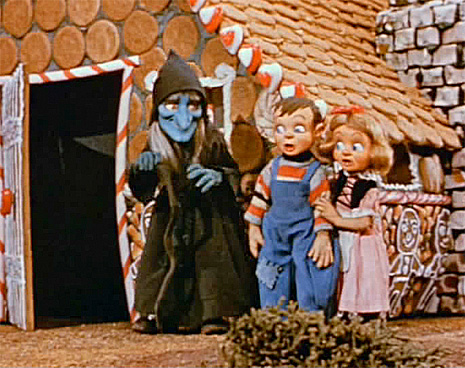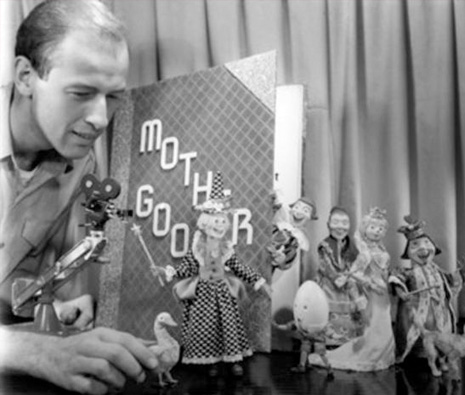
Around the end of the ‘90s, an art dealer friend of mine began bringing traveling exhibitions of Polish posters to town. It was eye-opening stuff—Eastern Europe has long had a tradition for outstanding poster art, its artists boasting stunning skills, married to an admirable obeisance to the visual legacy of traditional printmaking methods and jaw-droppingly inventive surrealist-influenced illustration. It was at one of those poster shows that I bought an item that remains one of my most cherished possessions: Istvan Orosz: Etchings and Posters, a slipcased, hand printed letterpress book from 1998, from an edition of only 750 (a second edition
of 300 was made in 2000), published by the apparently now defunct GrafikARCHIVE Publishing of Kansas City, MO. From an archived mirror of the company’s web site:
This first book features the work of internationally renowned Hungarian designer ISTVAN OROSZ. Fold out pages, envelopes with small printed pages of art, several different types of paper; “a feast for the eyes and the hands” (International Paper). The book received the ADDY Award in 1999 for its imaginative presentation by the firm DESIGN RANCH. Slipcase, wire-O bound in portfolio form, 82 pages with numerous 1 to 3 color illustrations. Essays by Roberta Lord (US) and Andras Torok (Hungary).
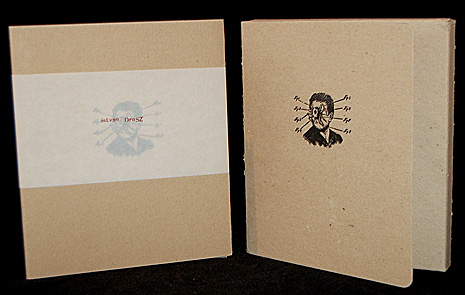
Other books of his work are more readily available and affordable, but it’s sad that this one in particular is such a rare item, as it’s a wonderful way to experience Orosz’s work—it’s a very playful book for a very playful printmaker, who shows strong influences from the likes of Magritte and Escher. But there are deficiencies. The printing technique makes it impossible to show much of his poster work in full color, and it excludes, due to obvious realities, his anamorphs and his animations.
First, feast your eyes on a few lovely posters.
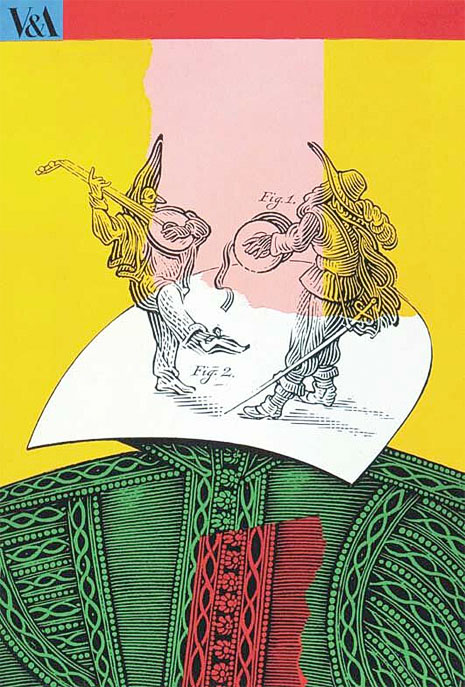
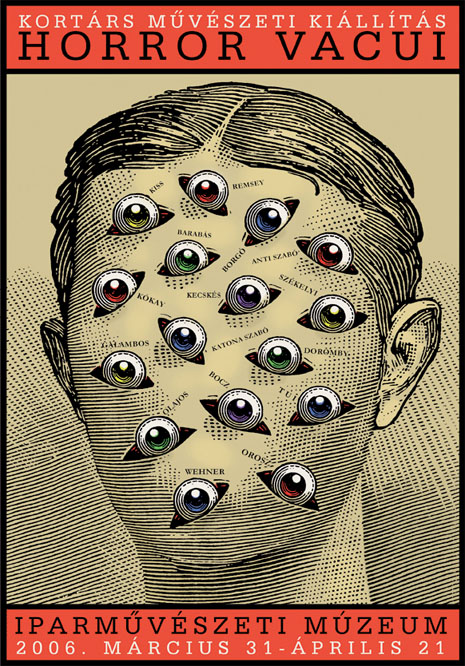
 
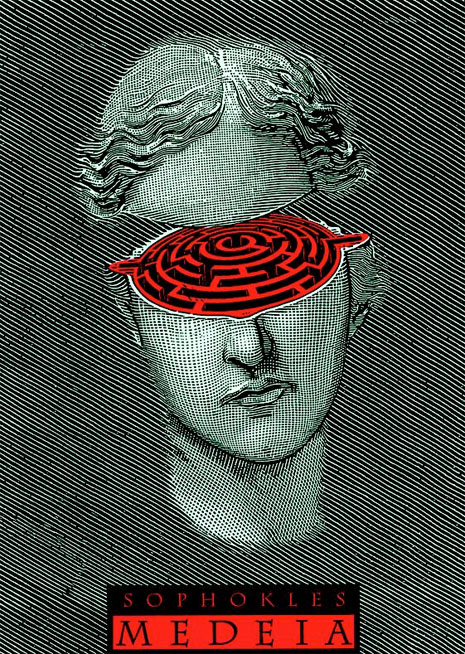
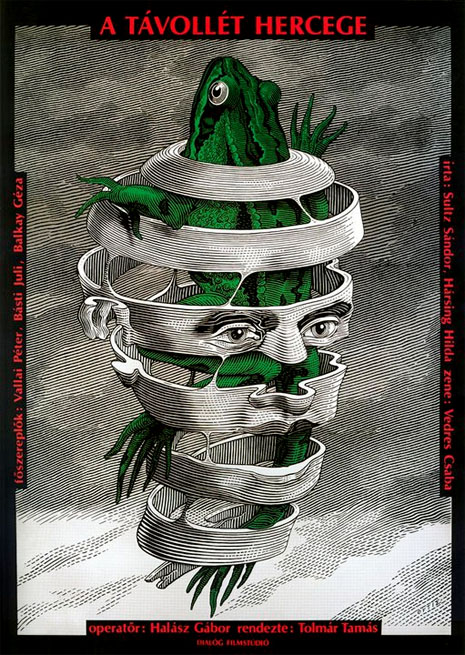
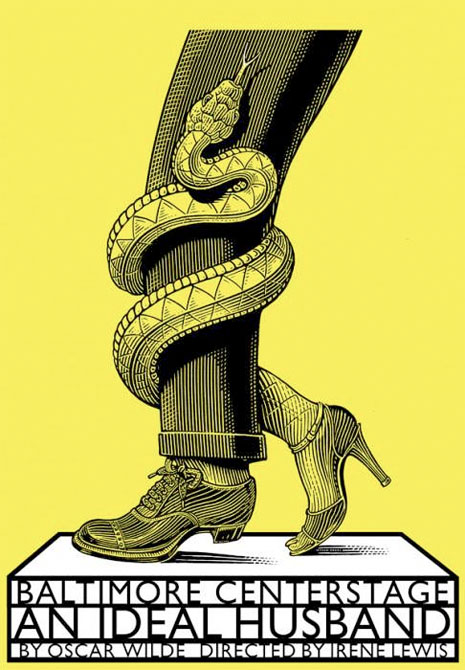
Now, check out his anamorphic work. Anamorphoses are artworks that look indecipherable until viewed from a specific angle or in a distorting mirror, often a cylinder. Check out how, on top of just the basic anamorphosis, Orosz goes the extra mile and embeds a hidden portrait into the drawing, or uses the anamorphic drawing and mirror as an extension of a larger work. Stuff like this always amazes me.

Jules Verne
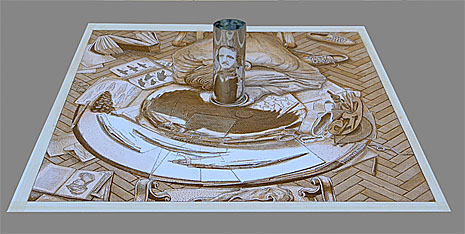
Edgar Allen Poe: The Raven

Anna Draws A Circle
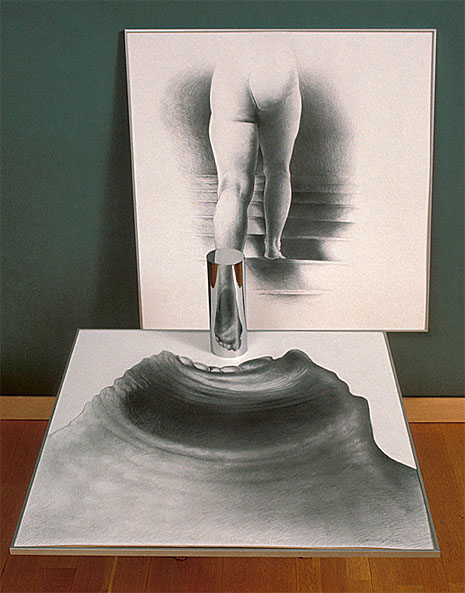
Anamorphic Bodyscapes 1
Finally, enjoy a few of Orosz’s marvelous animations. If the stuff on the printed page suits your fancy, I don’t suggest passing up the opportunity to watch his work dance.
More after the jump…








